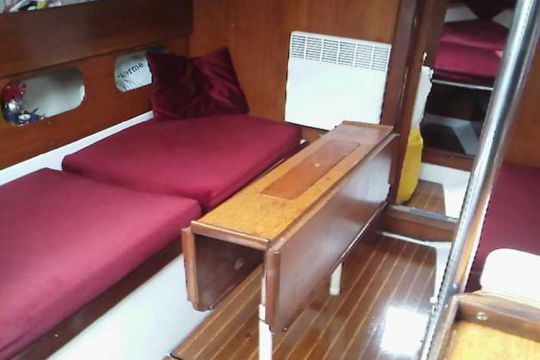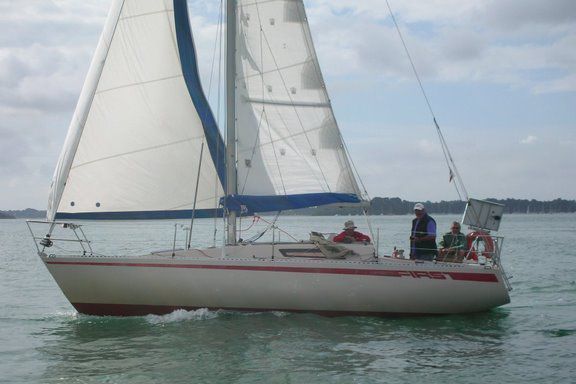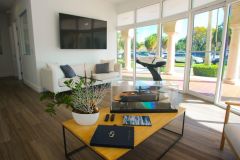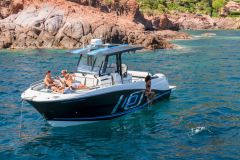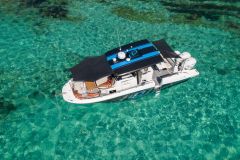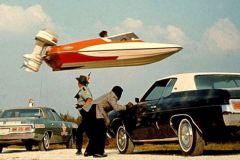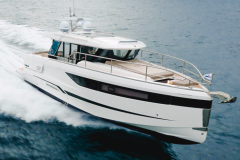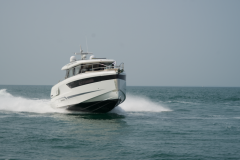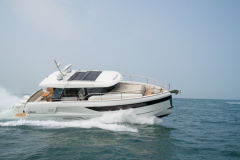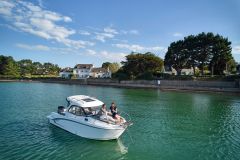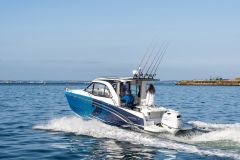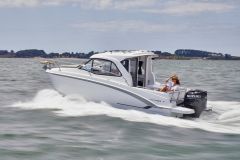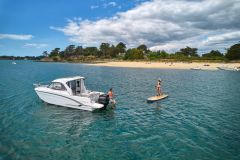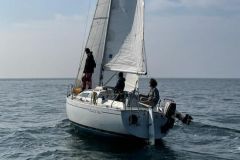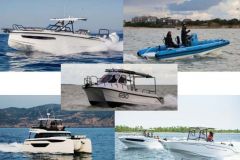Inspired by the Unthinkable
In 1976, Bénéteau launched the First 30, the Vendée-based manufacturer's first ocean-racing and cruising yacht. The latter took over the hull of the Unthinkable The new model is a moulded wooden prototype designed in 1972 by naval architect André Mauric for Michel Briand. The same boat that won the Half Ton Cup in 1973, and of which about ten polyester units were later built by the Quéré-Paillard shipyard.
At that time, Bénéteau was looking to design a production boat for cruising and got closer to André Mauric. Thus the First 30 will be designed on the basis of the Unthinkable. The 8.95m yacht was presented at the 1976 Nautic in Paris before being voted Boat of the Year in 1978. It will then be used as a support for the Tour de France à la Voile from 1978 to 1980.
It is characterized by its frigate hull and its "little ass", which allows it to sail under the IOR gauge. Inside, there is a forward cabin and a coffin berth, but no washroom.
"The First 30 is a mythical boat for those who sail. It was used on the Tour de France à la Voile. You could see them going through the Canal du Midi with their guitars in their hands. It was another era. It was also used many times on the Course de l'Aurore" explains Jean-François Duclos.
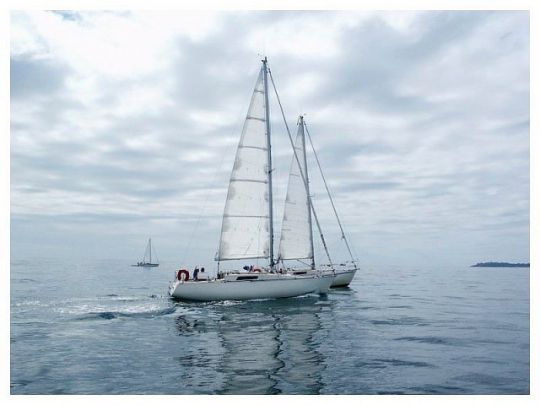
The First 30 has democratized boating
The First 30 is a kid's dream come true for Jean-François. So much so that he founded a homeowners' association in 2004 .
"When I was 18, I wanted a First 30. I had the chance to sail very young on beautiful wooden boats in the Morbihan and when we saw the Arpège arrive on the market in the 70s, it was extraordinary. It was a modern boat, big, fast and stiff under sail, and a good upwind sailor. That's all we wanted.
Then there was the First 30, which had a racing boat hull and was built out of plastic. This was the beginning of polyester construction in the 1980s and it opened up new prospects for people who could not have access to the previously expensive pleasure craft. The First 30 was part of the democratisation of sailing. When it was launched, it cost 300?000 francs, the price of an apartment, but still it was cheap compared to the prices of houseboats at the time."

The current market
Today, 969 First 30 have been built and many models can be found on the second-hand market. Since it was the beginning of industrialization, each model - yet it is a one-off series - is different. "If the length of the deck is the same, there may be aft feet of forward balconies that are positioned within 10 cm in different places, or differences in material between the starboard and port sides. It was not a one-design as we know it today", says Jean-François.
Thus, the selling prices are very disparate - from 3?000 euros for a poorly maintained boat to 15?000 euros for a boat in impeccable condition. Count between 8?000 and 12?000 euros for a reasonable budget.
"It's an endearing boat, easy and ideal for short-handed or single-handed sailing, precisely because of its very slender cockpit. She is forgiving of mistakes and works very well. She doesn't have to blush upwind on modern boats. It is a small boat for great pleasure on a small budget. On the other hand, you have to be able to do a lot of things yourself for maintenance", concludes Jean-François. And thanks to its marine qualities and its 7 berths, the First 30 is also appreciated for long voyages, so each year, several owners set off on a loop of the Atlantic aboard their emblematic sailing boat.
